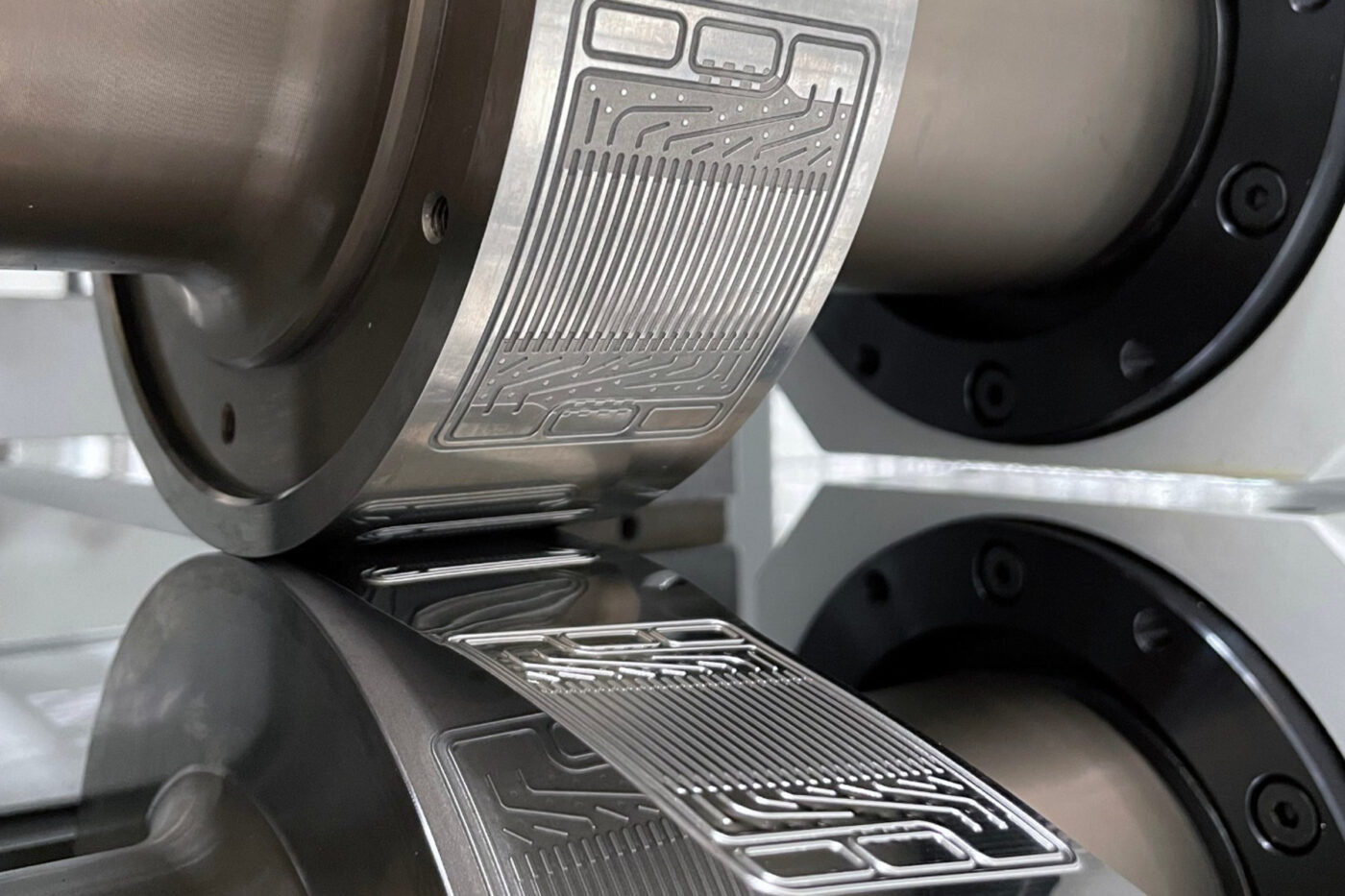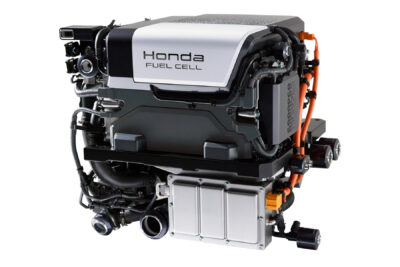Fraunhofer IWU wants to cut the cost of bipolar plate production
In the press release, the Fraunhofer IWU even says that the new system ” revolutionises” the production of bipolar plates. According to the institute, its latest machine, “BPPflexRoll,” is a “major step toward lower costs and mass production of bipolar plates.” Such bipolar plates are needed for both fuel cells and electrolysers.
In both cases, the bipolar plates enclose the wall winding components – in the fuel cell, this is the MEA (membrane electrode assembly); in electrolysers, it is the CCM (catalyst coated membrane). In a fuel cell stack, the double-walled structure of the bipolar plates enables oxygen and hydrogen to flow to both sides of the MEA and the stack to be water-cooled. However, this requires thin and exact structures, which makes production relatively expensive – especially in so-called discontinuous batch production.
“Each bipolar plate consists of two stainless steel halves. Structures for the gas flow and heat dissipation are embossed onto the halves in a discontinuous forming process, and then they are joined together,” explains Stefan Polster, head of the Sheet Metal Processing and Tool Design group at Fraunhofer IWU. “Our roll embossing system has the potential to replace these discontinuous process chains or production steps with a continuous process. With no stops and starts, this process will allow for high unit volume output.”
To make fuel cells and electrolysers cheaper to produce, teams from Fraunhofer IWU and the company Profiroll Technologies GmbH have developed a prototype system for roll embossing. The production line is currently in operation at the Fraunhofer IWU in Chemnitz. It already has control technology and an operating concept that is similar to an industrial system in key points. “One major advantage of roll embossing is the higher process speeds involved. As many as 120 BPP half plates can be produced every minute,” says Robin Kurth, group manager for forming machines at Fraunhofer IWU.
Instead of embossing the stainless steel half plates individually and then joining them together, the German company wants to emboss the structure of the bipolar plate using a pair of rollers through which the wafer-thin metal strip clamped in between runs continuously. “Since the rollers used to form the flow channels have approximately only one line contact with the workpiece, the step-by-step forming can reduce the process forces by a factor of ten on average compared to conventional embossing. That results in smaller, lower-cost machine technology,” says the institute.
Researchers will be presenting a system component with a roller and bipolar plates manufactured with it at the Fraunhofer joint stand at the Hannover Messe in Hanover, Germany, from 22 to 26 April.





0 Comments